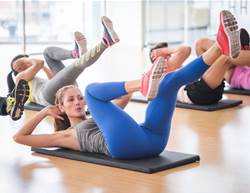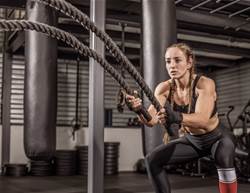Eating a healthy meal before exercise seems like the right move—many runners carbo-load before a big race—but how long should you actually wait to work out after eating?
The answer depends on the type of workout and food, so it’s important to consider a few factors before reaching for a pre-gym meal or snack.
For digestion to work efficiently, your body needs to be in “rest and digest” mode, says registered dietitian Amanda Sauceda. If you eat a large meal too soon before exercise, blood flow won’t be prioritised to the digestive system, which can leave you feeling sluggish or uncomfortable.
“Before focusing on timing meals around exercise, make sure you’re doing the most fundamental thing first—eating enough,” says Sauceda. “Prioritise meeting your macro and kilojoules goals before worrying about timing.”
Below, a personal trainer and Sauceda break down how long you should wait to work out after eating a snack, meal or particularly rich foods.
How long should you wait to exercise after eating?
According to certified A.C.E. personal trainer Joan Rogers, it’s best to avoid large meals right before hitting the gym. A good rule of thumb—regardless of workout intensity, whether it’s cardio or strength training—is to wait at least 30 minutes after eating, says Rogers. However, the type of workout and portion size can mean spacing your meal and exercise out by as much as three hours. Research supports this, with studies showing it takes between two and four hours for food to move from the stomach to the small intestine.
Snacks
“Timing snacks for pre- and post-training is a great place to start because it helps fuel your body while aiding recovery,” says Sauceda.
If you’re having a small snack, such as an apple or a protein bar, Rogers says waiting 30 minutes is usually enough. “This allows you to stay satisfied and power through your workout,” she explains.
A regular meal
For a moderate-sized meal, Rogers recommends waiting one to two hours before exercising. “Pay attention to what fuels your body best,” she advises. “The key is giving your body the nutrients it needs to perform well.”
A large meal
If you prefer a big meal before working out, you’ll need more time to digest. Rogers suggests waiting two to three hours, especially after heavier meals like pasta with cream sauce or steak and chips. “These take longer to digest and can leave you feeling sluggish,” she says.
How can eating affect your workout?
Exercising too soon after eating can cause digestive discomfort like cramping, nausea and bloating—whether you’re lifting weights or going for a run, says Rogers.
“Specifically with lifting, as gross as it sounds, going into a squat on a full stomach can make you feel like your meal is coming right back up—no one wants that,” she explains.
The reason? Your body prioritises digestion after eating.
“When you eat, especially a heavy meal, your body directs blood flow to the digestive system,” says Rogers. But when you start exercising, blood shifts to the muscles instead, disrupting digestion. “This leaves you feeling heavy, sick and not at your best,” she says.
Eating at the right time before exercise ensures your body absorbs nutrients properly and reduces the risk of digestive discomfort. But what you eat after a workout matters too.
Sauceda recommends small, easy-to-digest foods post-workout to help with recovery and energy replenishment. She suggests eating a smaller portion of something with protein for muscle recovery and carbohydrates for restoring glycogen stores (a main source of energy in the body).
Potential side effects
If you’re not spacing your meals and workouts properly, you may experience some side effects that affect your performance. Rogers says these may include:
- Cramping
- Bloating
- Nausea
- Feeling sluggish
- Heartburn
The bottom line
Ultimately, every body is different. But, experts suggest waiting at least 30 minutes and up to three hours after eating before working out can help you feel and perform your best.









